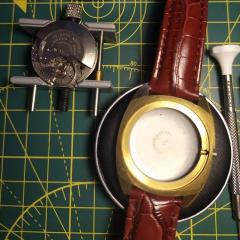What are These Runes?
-
Recently Browsing
- No registered users viewing this page.
-
Topics
-
Posts
-
You should be able to find something close in the shaped acrylics, https://www.cousinsuk.com/category/acrylic-shaped Then file to shape.
-
By HectorLooi · Posted
I've been watching YouTube and getting more and more confused. I've seen people use machine oil, engine oil, engine oil additives (Slick 50), D5, bearing grease, molybdenum disulphide grease, graphite grease, chain lube, PTFE dry lube.... Some advise putting a thin film, while others really slather on the stuff. I know @oldhippy always advises using Windle's Clock Oil on mainsprings, but how exactly is it applied and in what quantities? TIA -
By easthammer · Posted
I can’t seem to find it on there, that was the first place I looked -
By Neverenoughwatches · Posted
Ah ok, i can see we need to watch out for any watches you decide to sell on the Bay or elsewhere. Can you please post them here first before doing that. -
By Neverenoughwatches · Posted
You haven't lost it , its just hiding from you..
-






Recommended Posts
Join the conversation
You can post now and register later. If you have an account, sign in now to post with your account.
Note: Your post will require moderator approval before it will be visible.